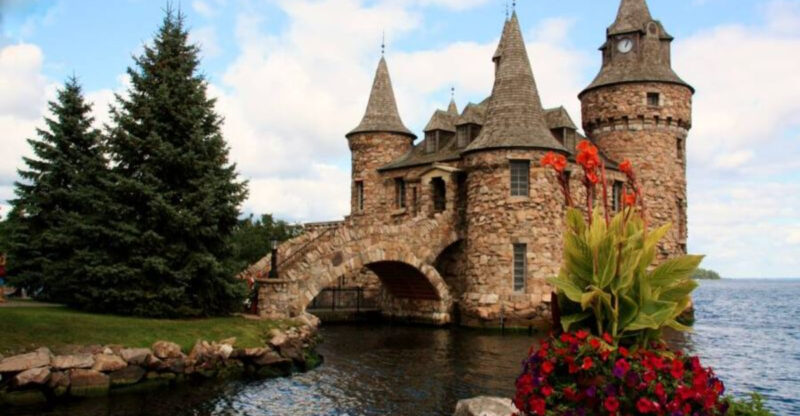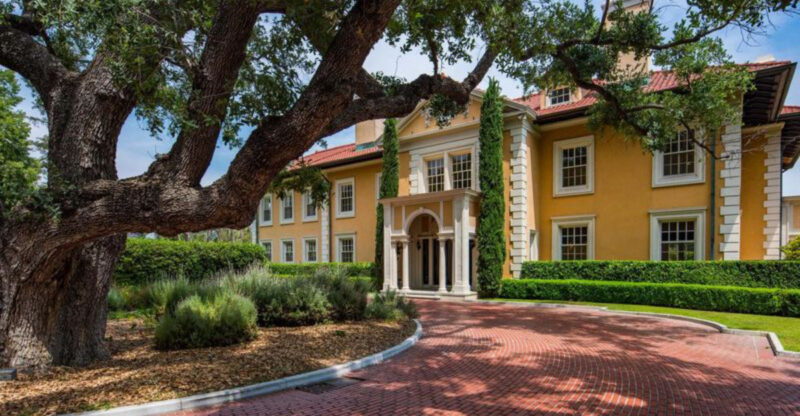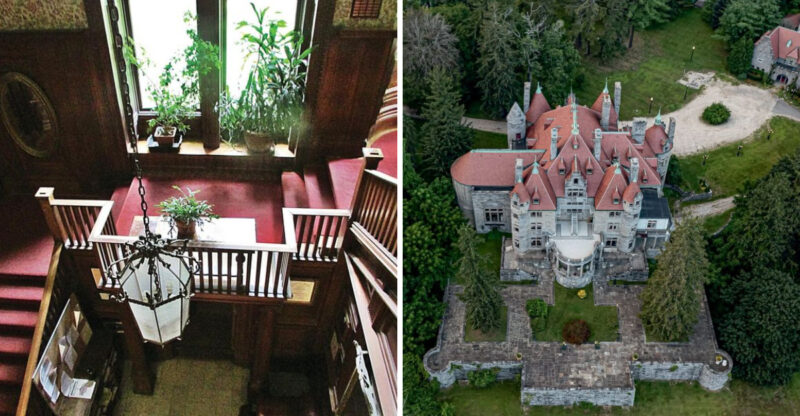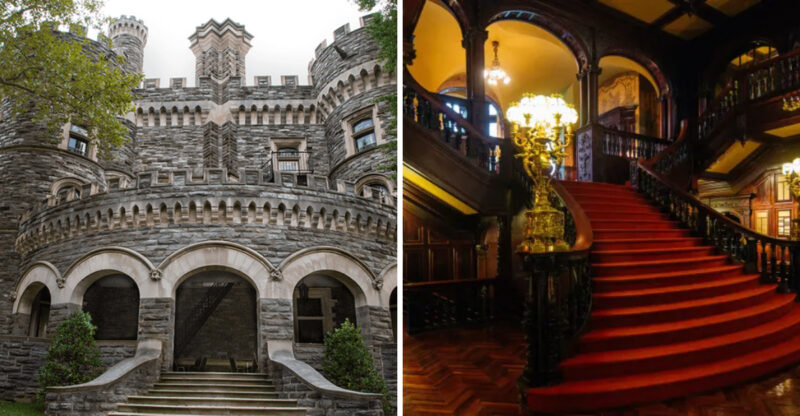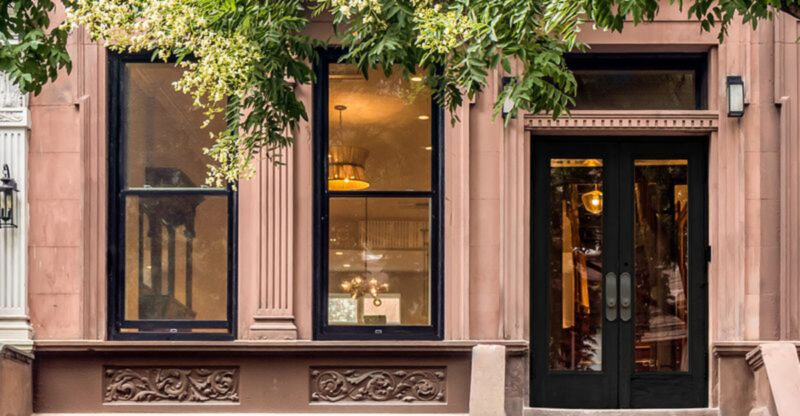Step Inside Hearst Castle In California’s Coastal Hills
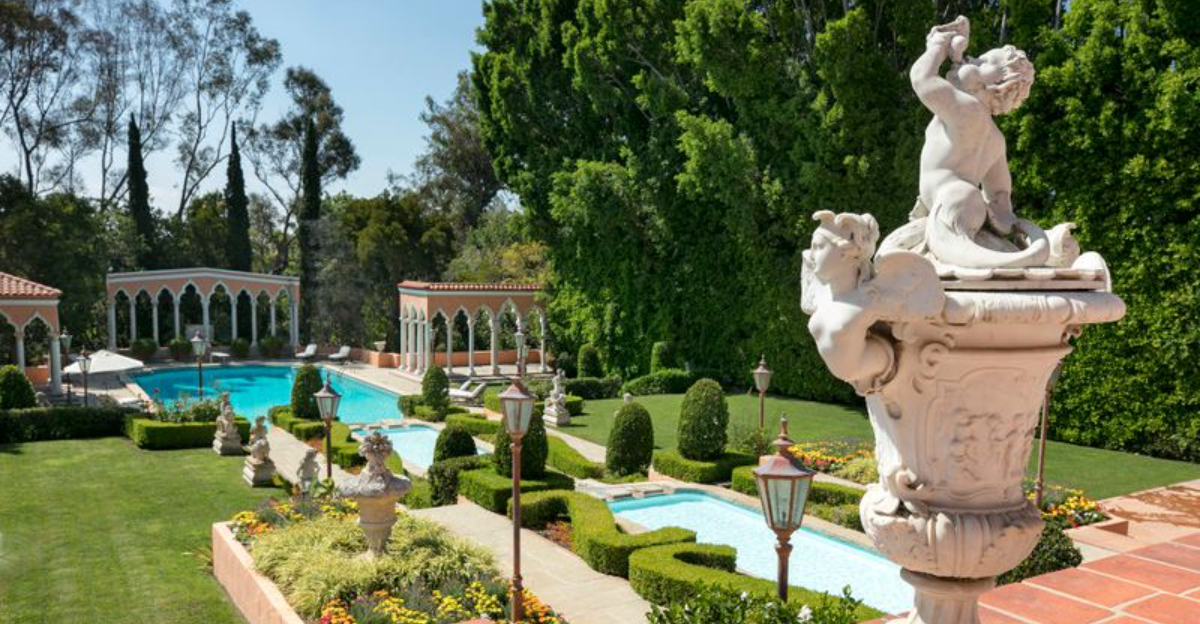
High above the California coast, a world of indulgence and artistry unfolds behind gilded gates. Marble colonnades shimmer in the sunlight, ancient statues keep silent watch, and hand-painted ceilings whisper stories from centuries past.
In Hearts Castle, old-world grandeur collides with early Hollywood opulence, creating an atmosphere unlike anything else in American architecture. Built on vision, wealth, and a flair for the dramatic, the estate invites guests into a layered story of power, beauty, and obsession with the finer things.
1. The Grand Entrance Hall

Visitors are immediately transported to another era when stepping into this magnificent space. Soaring ceilings adorned with intricate details hover above authentic European tapestries that line the walls.
Medieval suits of armor stand guard throughout the hall, while ornate chandeliers cast a warm glow over the imported marble flooring. The grand staircase serves as the focal point, beckoning guests deeper into the castle’s wonders.
2. Assembly Room
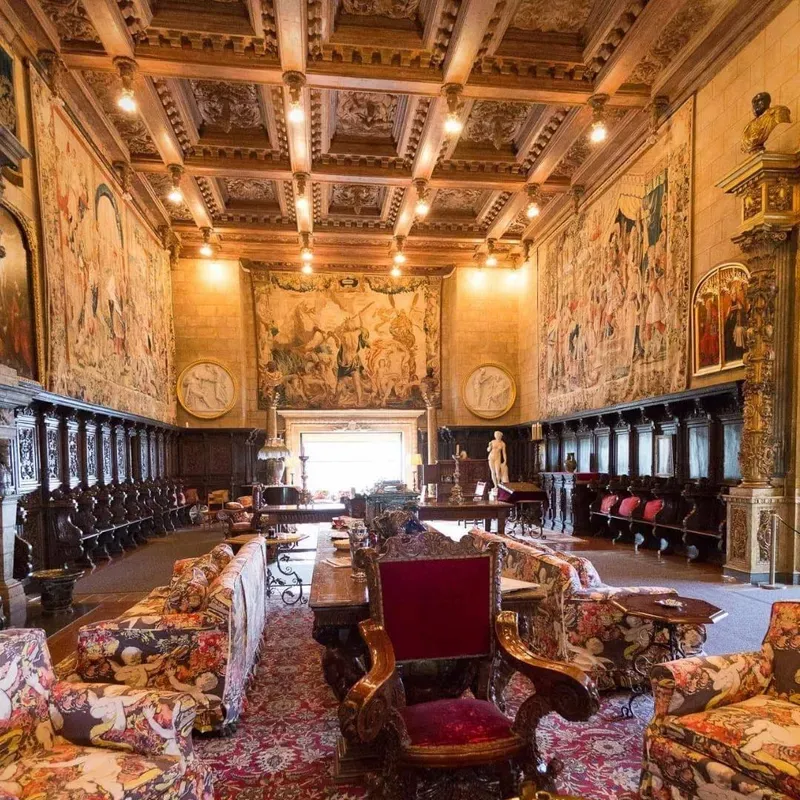
Once the social hub where Hearst entertained Hollywood stars and political elites, this expansive room showcases 16th-century Italian ceiling panels that required special reinforcement to support their weight.
Plush seating arrangements create intimate conversation areas throughout the space. People say that movie stars like Charlie Chaplin and Cary Grant once lounged here, enjoying drinks before dinner while admiring the priceless art and antiquities surrounding them.
3. Library
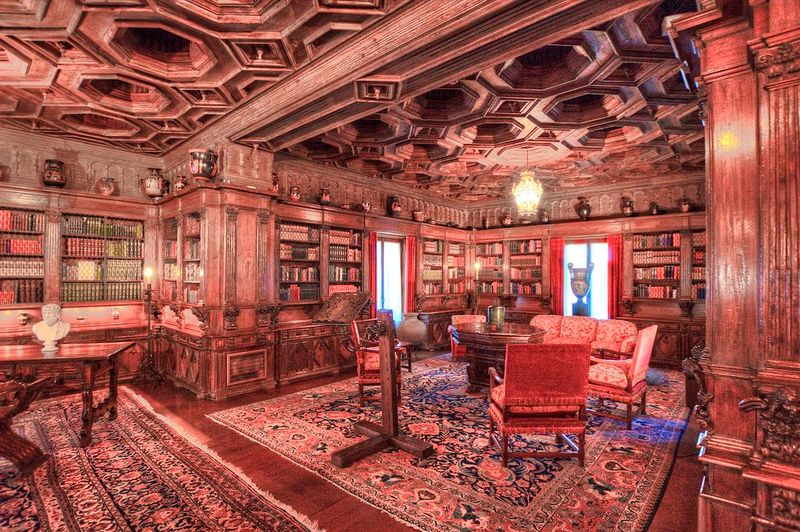
Thousands of rare volumes line the walnut shelves in this sanctuary of knowledge. Ancient manuscripts and first editions sit alongside modern works, reflecting Hearst’s voracious appetite for reading. The ceiling, imported piece by piece from an Italian palazzo, features hand-painted celestial motifs.
Comfortable leather chairs invite lingering, while hidden doors lead to private reading nooks where Hearst would often retreat from his guests to enjoy solitude among his literary treasures.
4. Dining Room (Refectory)
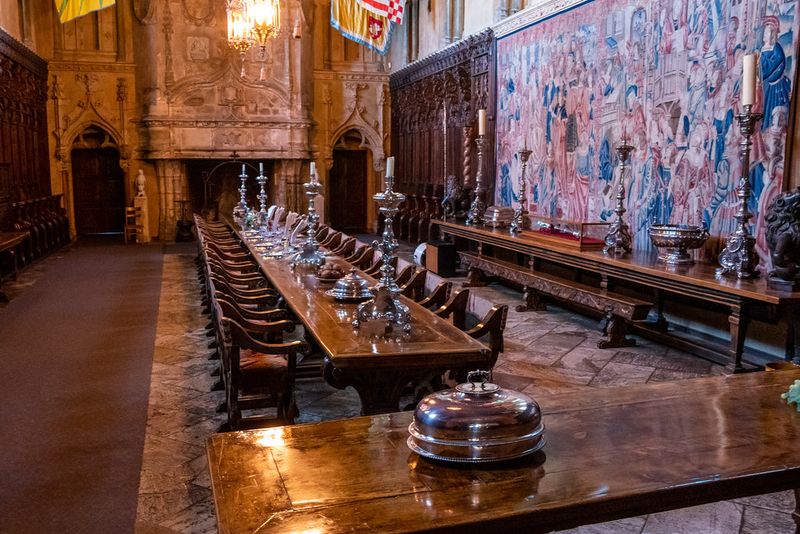
Known as the Refectory, this monastery-inspired banquet hall stretches 82 feet long with a table that seated up to 40 guests at once. Medieval banners hang from the walls, while the ceiling towers 30 feet above.
Hearst insisted on using paper napkins and ketchup bottles alongside priceless silver and china – an eccentric touch that surprised his sophisticated guests. Celebrities would gather here nightly, adhering to Hearst’s strict dinner dress code regardless of their fame.
5. Billiard Room
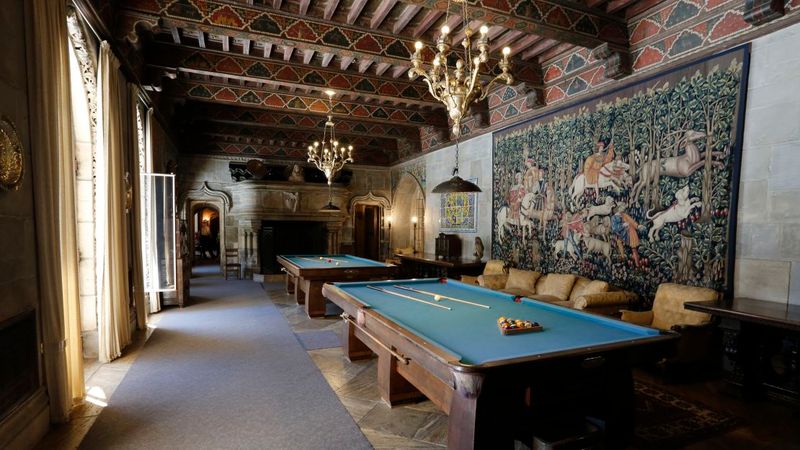
Antique pool tables from the 1800s dominate this masculine retreat where Hearst and his male guests would retire after dinner. The ceiling features 16th-century gold leaf designs from Spain, creating a rich atmosphere.
Hand-carved wooden panels from a European monastery line the walls. Famous politicians and business tycoons once plotted deals over games here, surrounded by museum-quality tapestries depicting hunting scenes that add to the room’s exclusive ambiance.
6. Theater Room
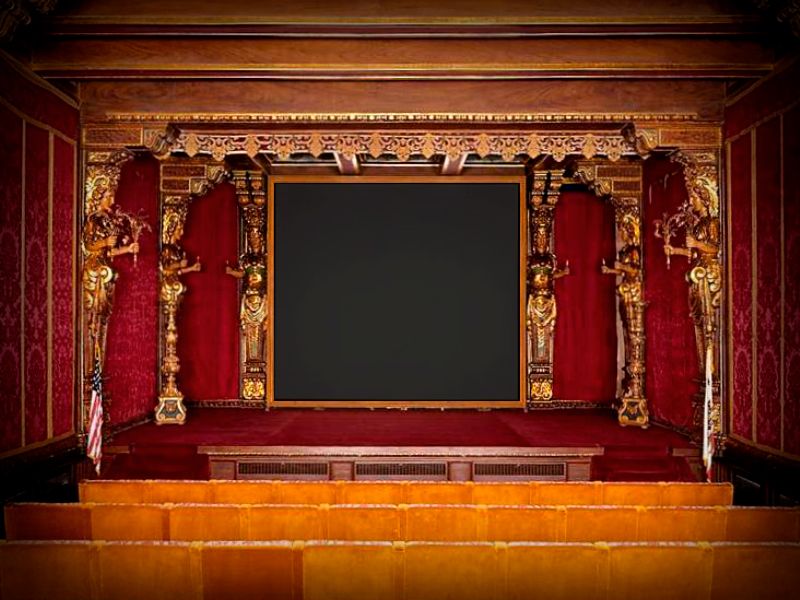
Movie magic came alive in this intimate 50-seat cinema where Hearst screened the latest films for his Hollywood guests. Red velvet seats provided luxurious comfort for viewing both news reels and feature films.
Stars would often watch their own performances alongside the newspaper tycoon. The projection booth houses original 1930s equipment still in working condition today. Hearst reportedly viewed more than 1,000 films here, often screening multiple movies in a single evening.
7. Kitchen
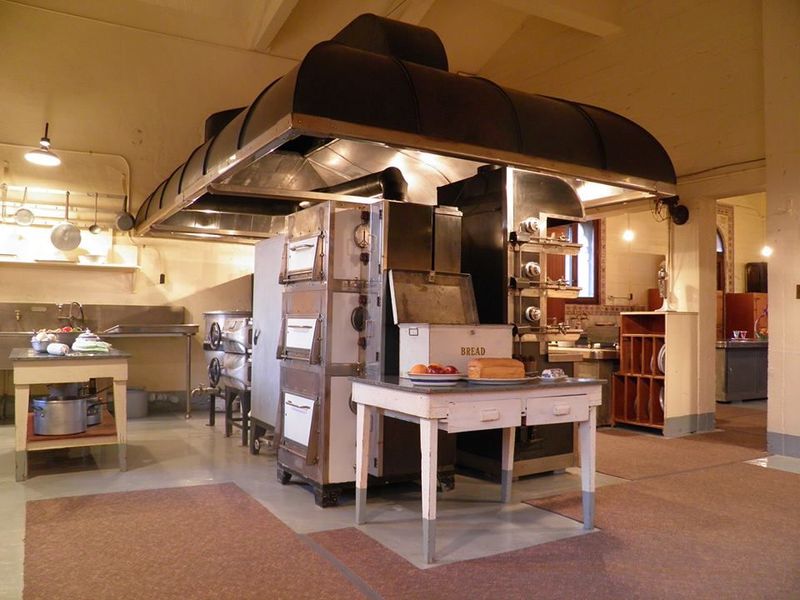
Behind the glamour of formal dining areas lies this industrial-sized culinary workspace where staff prepared feasts for Hearst’s famous gatherings. Massive commercial stoves and refrigeration units from the 1930s showcase early 20th-century innovation.
Copper pots hang from ceiling racks while gleaming stainless steel countertops stretch across the room. Specialized preparation areas include a dedicated pastry station and butcher block. The kitchen operated around the clock during Hearst’s residency, with staff preparing everything from elaborate multi-course dinners to midnight snacks.
8. Gothic Suite
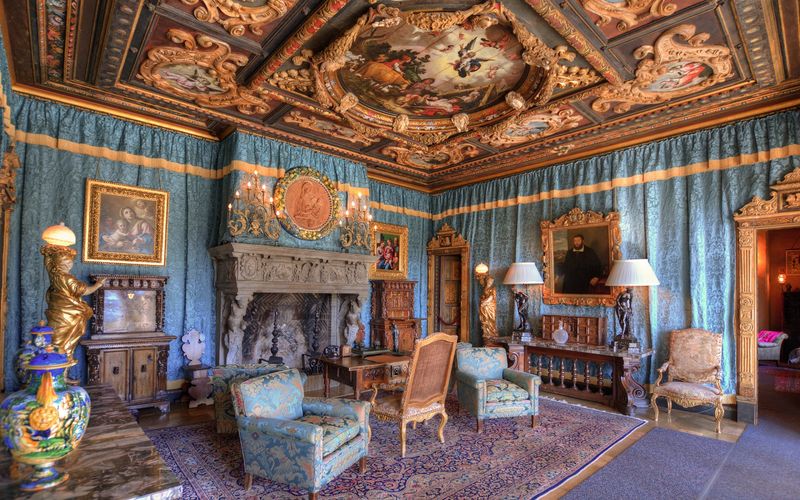
Hearst’s third‑floor Gothic Suite includes a soaring vaulted study with painted arches and faux‑wood beams – actually concrete – imported from medieval Europe, evoking a churchlike ambiance in his private library and executive board room.
The suite also houses two bedrooms and a sitting room used by Hearst and Marion Davies. The study features built‑in bookcases loaded with thousands of volumes, statuary and sacred metalwork, and a conference‑style table beneath the dramatic ceiling.
9. Celestial Suite
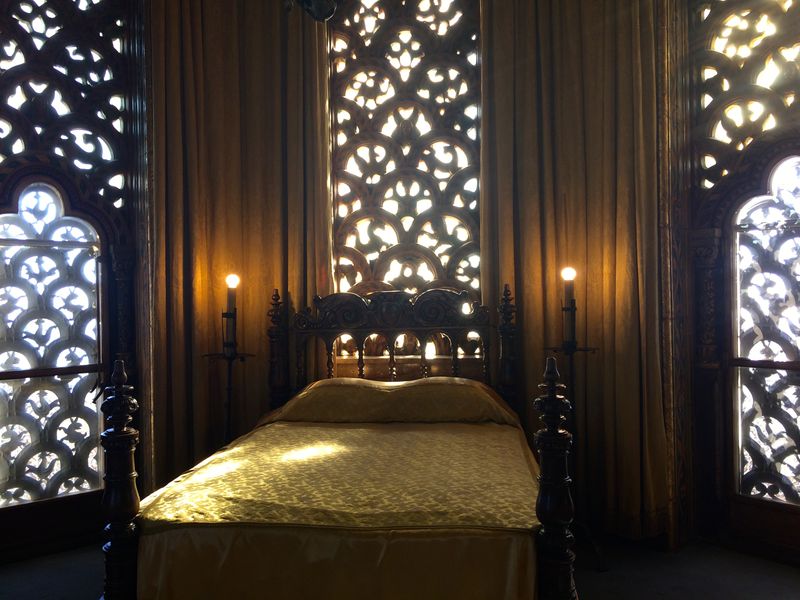
Perched in the base of Casa Grande’s twin bell towers, the Celestial Suite was created between 1924 and 1926 from once-empty space.
It consists of two tower bedrooms and a shared sitting room bathed in golden sunlight with sweeping ocean views from the highest point in the house. Though compact, the rooms feature ornate carved Gothic windows and sunlight-filtering latticework that produce dramatic light effects.
10. Duplex Suite
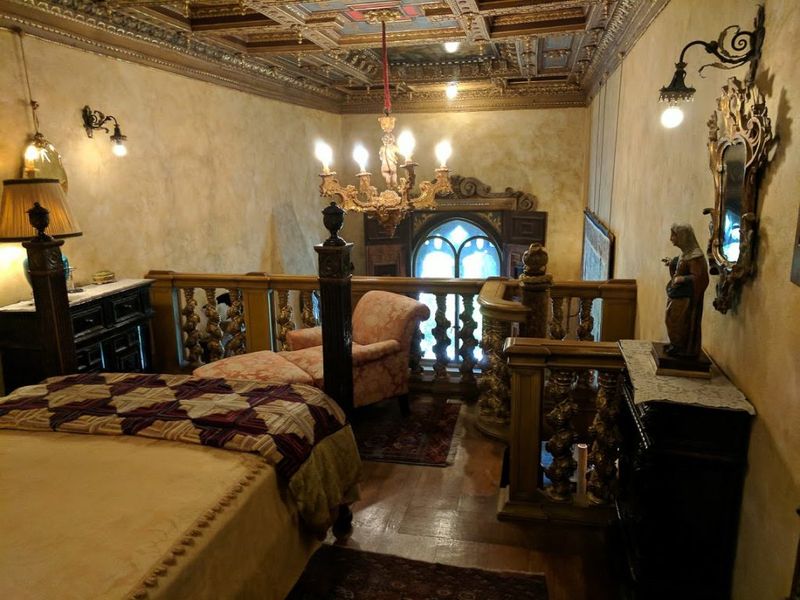
These bedrooms, located on a mezzanine level above the Doge’s Suite, were designed as spacious sitting rooms topped by lofted bedrooms. The Duplex Suite was originally intended as a light well, later transformed with painted ceilings and tapestries into unique guest suites.
Decorative marriage chests and Gothic-patterned panels appear in the furnishings, showcasing Hearst and architect Julia Morgan’s blend of salvage and innovative planning.
11. Della Robbia Room
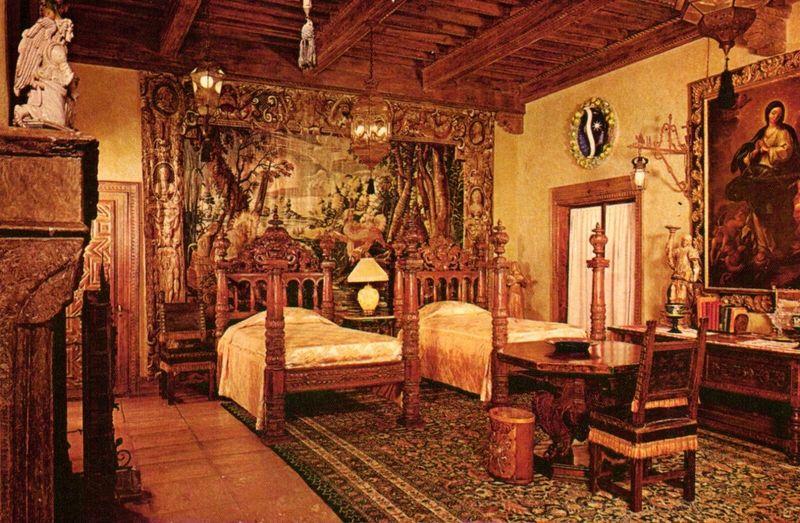
This room is a refined guest bedroom in Casa Grande named for its Renaissance‑era tin‑glazed terra cotta reliefs by the Florentine Della Robbia family.
The room’s period furnishings, fine statuary, and decorative vases reflect Hearst’s interest in Italian Renaissance art. It exemplifies tight spatial planning yet retains elegance through carefully selected antique pieces and soft lighting.
12. Neptune Pool
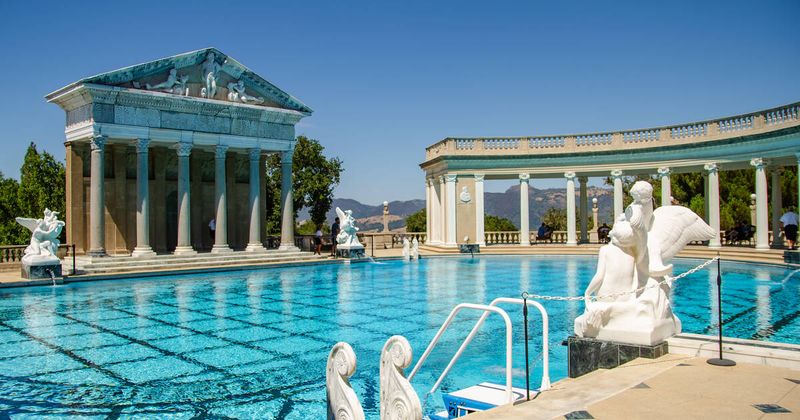
Ancient Greek temples inspired this outdoor swimming paradise, featuring authentic marble colonnades surrounding 345,000 gallons of crystal-clear water. Vermont marble lines the pool floor, creating an ethereal blue glow in sunlight.
Hollywood stars like Clark Gable and Carole Lombard once swam here during lavish weekend parties. The pool underwent three redesigns before Hearst was satisfied with its grandeur. From this vantage point, swimmers enjoy breathtaking views of the Pacific Ocean and surrounding mountains.
13. Roman Pool
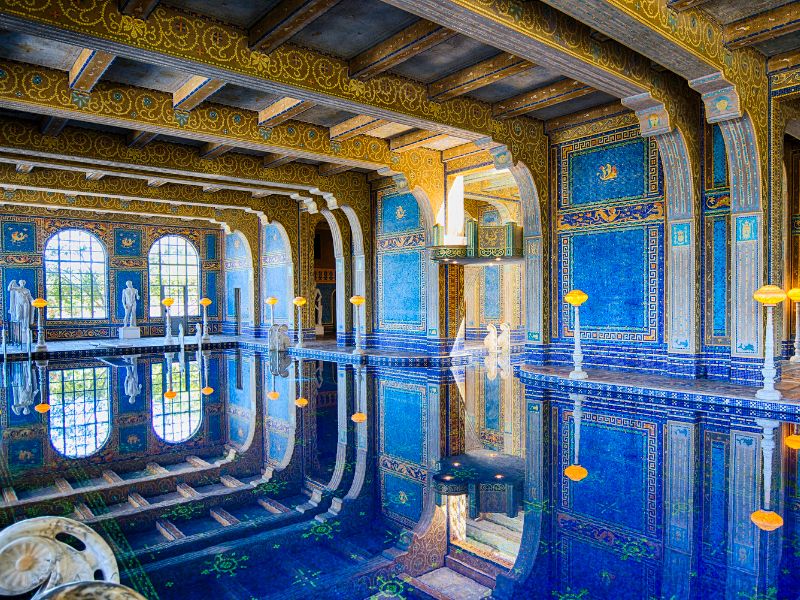
Blue and gold glass tiles cover every surface of this indoor swimming grotto, creating a shimmering underwater atmosphere. Inspired by ancient Roman baths, the pool features eight marble statues of Greek gods watching over swimmers.
The ceiling’s intricate mosaics contain real gold pieces that reflect in the water below. Hearst often enjoyed midnight swims here after long evenings entertaining guests. Hidden underwater speakers once played music, creating an immersive experience for swimmers in this subterranean aquatic palace.
14. Garden Terraces

Cascading levels of meticulously manicured gardens surround the main building, creating outdoor rooms for relaxation and entertainment. Italian cypress trees stand like sentinels along pathways lined with classical sculptures collected from European estates.
Seasonal flowers provide changing color palettes throughout the year. Rose gardens feature rare varieties cultivated specifically for Hearst by renowned horticulturists. From these elevated terraces, guests enjoyed spectacular sunset views over the Pacific while sipping cocktails during Hearst’s legendary parties.
15. Courtyards
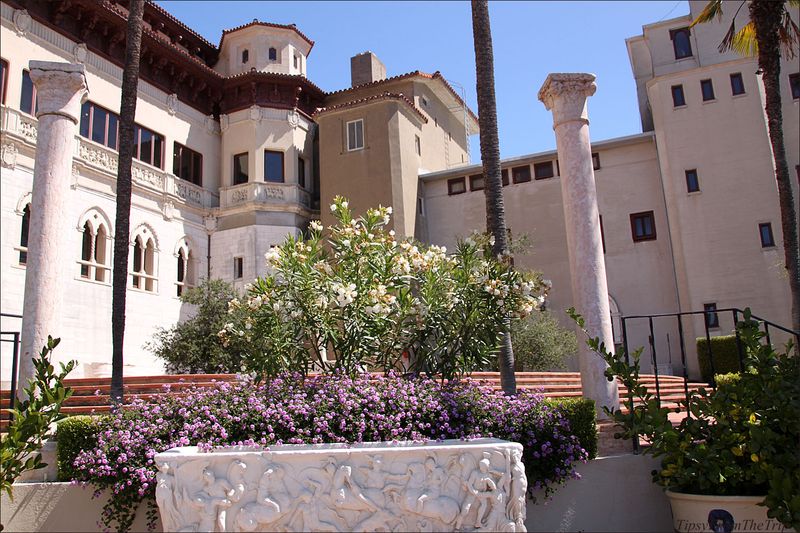
Several intimate outdoor spaces provide tranquil retreats within the castle complex. The main courtyard features a 15th-century Italian wellhead surrounded by Mediterranean plants that thrive in California’s coastal climate.
Stone benches offer quiet contemplation spots beneath fragrant lemon and orange trees. Hearst would often take morning coffee here, planning his day while listening to birds in the nearby aviary. During evening gatherings, these courtyards transformed with torchlight, creating magical settings for conversations among notable guests.
16. Walkways & Fountains
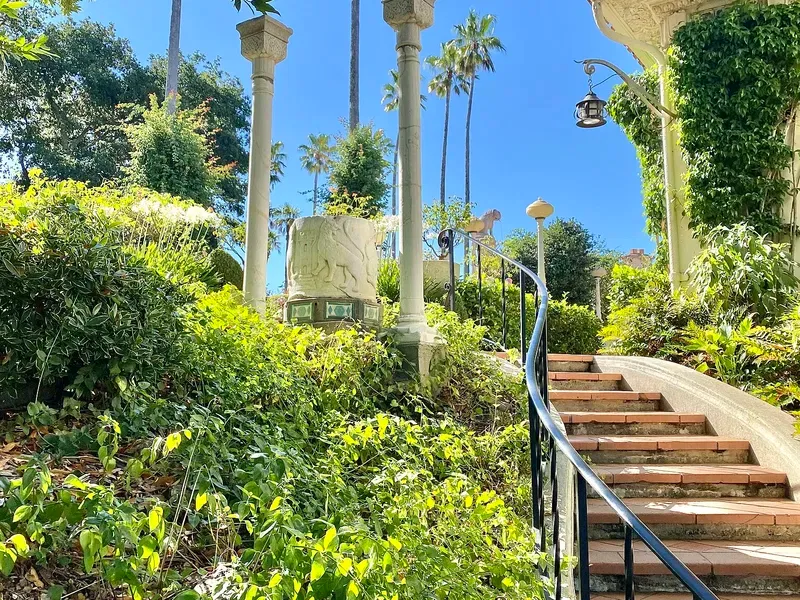
Stone pathways connect the estate’s various buildings, flanked by ancient Roman sarcophagi repurposed as flower planters. Carved limestone balustrades guide visitors through gardens where hidden speakers once played music from an extensive record collection.
Fountains create soothing water music throughout the property. The Neptune fountain features bronze mythological figures that appear to dance in the water. Hearst insisted on constant maintenance of these pathways, ensuring guests could wander the extensive grounds regardless of weather or time of day.


